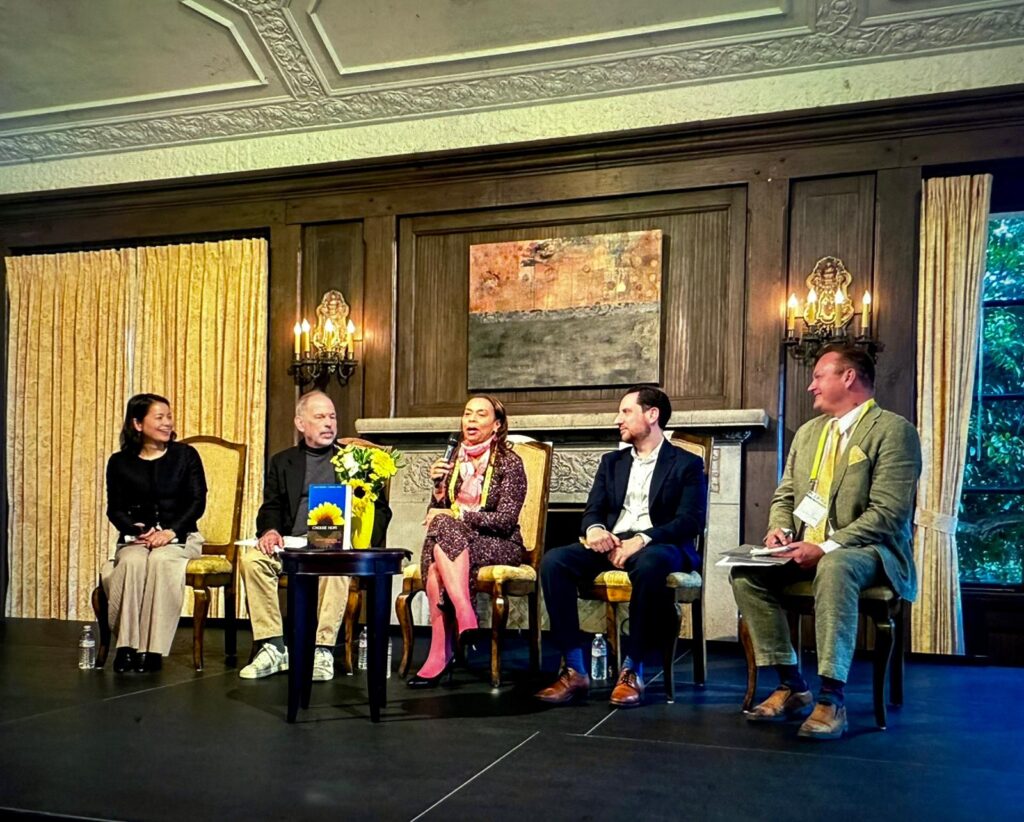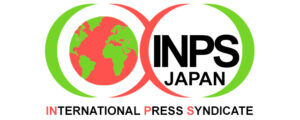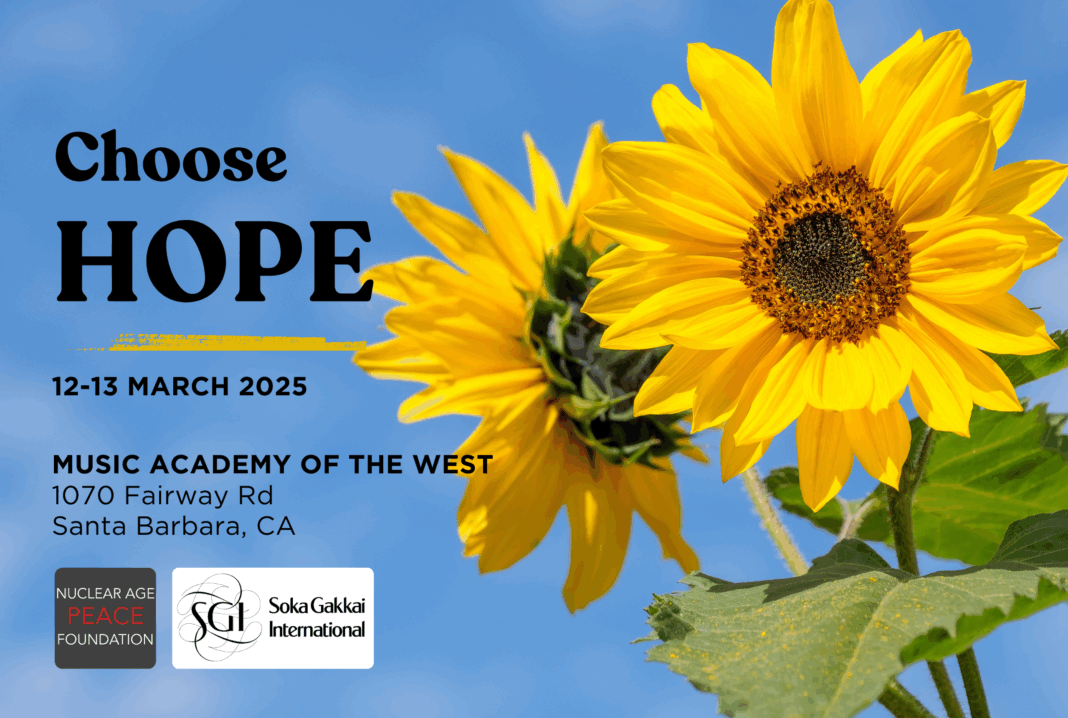Symposium Overview

On March 12–13, 2025, peace advocates, survivors of nuclear weapons, youth leaders, diplomats, scholars, and artists from around the world gathered in Santa Barbara, California, to mark 80 years since the beginning of the nuclear age. Co-hosted by the Nuclear Age Peace Foundation (NAPF) and Soka Gakkai International (SGI), the “Choose Hope” symposium was inspired by the landmark 2001 dialogue book Choose Hope by David Krieger and Daisaku Ikeda.
Held at the Music Academy of the West, the symposium addressed the existential threat of nuclear weapons, the ethical and humanitarian imperatives for disarmament, and the power of culture, youth, and civil society to shape a peaceful future. With keynote remarks from Pulitzer Prize finalist Annie Jacobsen, who offered a chilling scenario of nuclear escalation, and contributions from prominent disarmament leaders and affected communities, the event reaffirmed global solidarity in the pursuit of a world free of nuclear weapons.
The symposium concluded with the unanimous adoption of the following Choose Hope Declaration, calling on individuals, governments, and movements to reject deterrence and embrace disarmament, justice, and creative action.
Related article: From Deterrence to Disarmament: Global Advocates Call for Justice and Peace
Choose Hope Symposium Declaration, March 2025
“By coming together, we can convince ever-widening circles of people that nuclear arms abolition is an issue that affects their futures.”– David Krieger and Daisaku Ikeda, Choose Hope (2001)
Eighty years after the very first nuclear weapons were built by the United States and subsequently used in an explosion in New Mexico and to attack the cities of Hiroshima and Nagasaki, the world continues to be threatened by these terrifying weapons of mass destruction. The atomic bombings on Japanese cities full of civilians continue to place a heavy burden on all who dare to think about them, and most especially on the survivors of the explosions and their loved ones. The calls of the hibakusha for the abolition of nuclear weapons — first made before their wounds even healed or the full impacts of radiation exposure revealed themselves through illness — must be heeded.
Beyond the symbolism of this significant anniversary year, there is further reason for, in the words of Martin Luther King Jr., “the fierce urgency of now.” The Doomsday Clock is at 89 seconds to midnight, the closest it has ever been to the purported Nuclear Armageddon. The war in Ukraine has marched into its fourth year, and while there is at least talk of peace, there is simultaneously talk of further militarization, division, and tensions between various regional and geopolitical players, notably NATO and Russia. The Middle East continues to be mired in conflict, with Syria in disarray, some political leaders openly discussing ethnic cleansing of Palestinians in Gaza, and strain over Iran’s nuclear program. East Asia is witnessing military build-ups, while the Taiwan Strait remains a flashpoint that is pitting the United States and China against one another, while nuclear-armed India and Pakistan have been attacking each other’s military bases and recently came closer to a full-blown conflict than they have in decades. Amidst this dark global picture, the prospect of nuclear war is certainly more likely than at any point since the end of the Cold War.
But difficult times are also often ones of change. Before he passed away, Pope Francis declared this year, 2025, a Jubilee Year: A Year of Hope. Nihon Hidankyo, the Japanese organization of atomic bomb survivors, recently won the Nobel Peace Prize for 2024. Annie Jacobsen’s book, Nuclear War: A Scenario, has re-energized the disarmament movement and awakened a broader sector of the general public in the United States and beyond. This year will also mark the 80th anniversary of the founding of the United Nations (UN), whose aim is to bring nation states together in creating a more peaceful world. Finally, the Treaty on the Prohibition of Nuclear Weapons (TPNW), whose States Parties concluded a successful Third Meeting at the UN Headquarters in New York in March, stands as a beacon of hope that nuclear abolition is possible. As half of the countries of the world work towards a world free of nuclear weapons by promoting and implementing this historic treaty, we pledge to support them and their efforts until all of the TPNW goals have been reached.
The situation on the ground is terrifying. Nuclear weapons could end human civilization in a little over an hour. This fact alone should bring people together in a shared mission to preserve humanity and the planet for all future generations and for all other life forms on Earth. But instead of simply despairing, we choose hope, guided by the words and actions of David Krieger and Daisaku Ikeda, two leaders who came together to advance a vision of a peaceful world, free of nuclear weapons. First, we consider what nuclear weapons do to us, what they can do to us, what they have already done, and why their total elimination is an existential imperative. Next, we reject nuclear deterrence as a tool of safety and declare it to be the danger and threat in and of itself, robbing the general public and the political establishment of the opportunity to commit and work towards nuclear disarmament. Finally, we explore pathways for change, through art, greater connections to other kinds of activism, including on climate change, and engagement of young people.
72 Minutes to Nuclear Armageddon
Annie Jacobsen’s book, Nuclear War: A Scenario, reveals – in stark detail – the timeline that begins with the detection of a single missile heading for Washington, D.C. and ends with the destruction of human civilization as we know it. A bolt-out-of-the-blue attack by a madman, in this scenario, Kim Jong Un of North Korea, puts in motion a series of events, some mere seconds and some just minutes apart, that result in a full-scale nuclear war between the United States and Russia. As thousands of nuclear warheads, carried by bombers, intercontinental ballistic missiles, and nuclear-powered submarines, fly over mother Earth, the planet is about to change, in the most dramatic and sudden way possible. In the words of the late Daniel Ellsberg, nuclear weapon policies are “dizzyingly insane and immoral.”
While the events leading to nuclear war will take place in minutes, some of the consequences, such as the spread of radiation fallout around the globe and the destruction of the ozone layer, will take more time. So will the onset of nuclear winter, caused by the soot from massive fires blocking incoming sunlight and reducing temperatures worldwide. This climatic change will further lead to the breakdown of food production, resulting in eventual global starvation. Studies estimate over five billion people dying of starvation within two years in case of a nuclear war using approximately one third of the US and Russia’s current arsenals.
At the end of her book, Jacobsen states, “With time, after a nuclear war, all present-day knowledge will be gone. Including the knowledge that the enemy was not North Korea, Russia, America, China, Iran, or anyone else vilified as a nation or a group. It was the nuclear weapons that were the enemy of us all. All along.”
We take these words as a rallying call to eradicate nuclear weapons before they eradicate us and destroy a future for humanity and all other life on our beautiful planet.
From Deterrence to Disarmament
Nuclear deterrence is a construct that is used to justify the existence of massive nuclear arsenals, their role in current geopolitical discourse, and the enormous budgets for maintenance, as well as modernization of stockpiles. The idea is relatively simple: by having nuclear weapons, a state deters other states from attacking it. The “evidence” that is often used to support nuclear deterrence is that there has been no World War since 1945, and this is further attributed specifically to nuclear weapons. However, this statement merely demonstrates a correlation, not causation, as plenty of other changes have taken place in our world since 1945, including the founding and rise of the United Nations, an increase in economic standards, trade, and technological development worldwide, as well as globalization, progress in women’s rights, and environmentalism. Moreover, many wars have been fought in the intervening decades, including ones involving nuclear-armed states, leading to the death of millions of people, on par with how many died in World War II itself.
Is there any evidence that nuclear deterrence may fail? Since 1945, there have been dozens of incidents in the US alone, where nuclear weapons may have been used by design, accident, or miscalculation. These incidents demonstrate that rather than deterrence working, we have been lucky. Even proponents of nuclear deterrence contend that deterrence could fail. What is missing, however, is the recognition that the current state of affairs cannot go on indefinitely without a catastrophe that would impact the whole world. In the words of the UN Secretary General, Antonio Guterres, “Luck is not a strategy.”
The argument that some states need nuclear weapons to be safe, while others should refrain from developing them is furthermore unsustainable. The existing global imbalance could lead to discussions about the possibility of further proliferation among those without current capabilities, a subject that has been openly considered in several parts of the world. Disarmament of existing arsenals and total prohibition of further development or transfer are the only answer to the threat and risk that nuclear weapons pose to our world. The TPNW is championing this goal at the UN and beyond.
We will:
- Challenge the narrative of security based on deterrence and shift the discourse to focus on achieving human security.
- Raise awareness in Nuclear Weapon States and their allies on the humanitarian impact of nuclear weapons
- Engage in dialogue with those holding different views, seeking to arrive at a common understanding of the risks nuclear weapons pose to our world.
Nuclear Legacy: A Call for Justice
Nuclear weapons do not just threaten our futures, they have impacted the past and present of communities affected by their use and testing worldwide. From Algeria to Australia, from French Polynesia to Kazakhstan, from Kiribati to the Marshall Islands, from New Mexico to Utah to New York, the stories of suffering, ill effects on physical and mental health, and breakdown of cultural and sustainable practices abound. Personal stories, like those of Mary Dickson, a US Downwinder, expose nuclear weapons for what they are, inhumane instruments of murder, both instantaneously and over the long-term, that have devastated people time and time again.
Out of the suffering, many have risen to advocate for themselves and their communities, championing efforts to achieve nuclear justice and nuclear abolition. The TPNW was borne out of the Humanitarian Initiative, which centered the experiences of survivors to expose the truth behind nuclear weapons, helping to lead to the only logical conclusion: that nuclear weapons must be eliminated. Simultaneously, the TPNW recognizes that those who have suffered still need help. Articles 6 and 7 of the treaty contain provisions for victim assistance and environmental remediation and international support. These articles inspired States Parties to consider the feasibility of the establishment of an international trust fund for victims. Other efforts, through UN General Assembly and Human Rights Council Resolutions, as well as national legislation, complement the TPNW’s efforts to achieve nuclear justice.
Ultimately, nuclear justice must involve recognition, compensation, and the promise to never again use nuclear weapons in any way. Eliminating all nuclear weapons would ensure that we can in fact keep this promise.
We will:
- Advocate for nuclear justice at the local, national, and international levels, including the TPNW International Trust Fund to assist victims and remediate environments.
- Engage survivors of use and testing and their descendants in key discussions about nuclear weapons.
- Support the Request for the Secretary-General to convene a one-day meeting on victim assistance and environmental remediation stemming from nuclear weapons use and testing.
The Intersection Between the Environmental Crisis and Nuclear Activism and the Role of Youth
Although nuclear weapons threaten the world in a unique and terrifying way, at least in part due to the speed with which they can bring about the end of human civilization, there are other existential risks to life on Earth. For example, an asteroid strike and a supervolcano eruption are entirely natural and potentially beyond our capacity to mitigate or adapt to, but they also may not come to pass for thousands of years. Others, like pandemics and artificial intelligence, have yet to fully reveal the extent of their potential consequences, as well as the time scales on which they might act. The environmental crisis, happening right now, is a slow-unfolding catastrophe that will continue to bring about local and regional devastation from time to time, as well as fundamental shifts to habitability trends of vast areas. Although we are currently not doing enough to mitigate and adapt to global warming and species extinction, the level of activism and awareness is high, and far higher than it is in regards to the nuclear threat. Finding a way to effectively connect with environmental activism is a key task for the disarmament movement. Building coalitions with environmental groups, such as Warheads to Windmills, is an important tool in this quest.
In the words of a Native American proverb, “We do not inherit the Earth from our ancestors, we borrow it from our children.” It is critical to engage young people in efforts towards nuclear abolition and disarmament, both because they should have a say in their own futures, but also because they can bring much needed energy, creativity, and idealism to bear on these existential questions. Education is key to achieving a world free of nuclear weapons, and all efforts to educate and engage young people should be supported and rewarded. Initiatives, including Reverse the Trend and Youth for TPNW, as well as educational programs focused on the mission of peace, such as those at the Soka University of America, can plant the seeds of engagement that will amplify the voices of young people from around the world.
We will:
- Forge ties with organizations working on climate change and environmental justice, seeking common ground in ensuring a better future for humanity and the planet.
- Promote efforts to divert funding from the nuclear weapons industry to climate change mitigation and adaptation.
- Amplify the voices of emerging young leaders who are advocating for a world free of nuclear weapons and climate action.
The Role of Art in Bringing About Change
In 1983, 100 million Americans watched the film The Day After on the TV channel ABC. Among them was the President of the US, Ronald Reagan. He was allegedly so moved by the film that he proceeded to fundamentally change his stance on nuclear weapons. This shift in Reagan’s thinking led to him almost agreeing to eliminate the nuclear arsenal of the US at his meeting with President Gorbachev in 1986 in Reykjavik. Although the arsenals were not eliminated, the US slashed more than half of its nuclear weapons over the next ten years. Disarmament worked then and it can work again.
In 2023, the film Oppenheimer reawakened a general public long asleep on the issue, albeit not in a way that has led to widespread action. Nuclear weapons need to be talked about at art exhibits, in music concerts, and in films that can bridge the gap between the historical and the immediate, that can show people that this is about their own future and the future of humanity. Art can be a powerful tool to inspire the general public, to put pressure on their elected officials. As in the case of Reagan, there may be a more direct line from art to our leaders. The nuclear disarmament movement needs to work and collaborate with artists of all kinds to educate them and support them in taking on a key role in changing hearts and minds and ultimately the world.
We will:
- Engage with artists and artistic communities to raise awareness about the threat that nuclear weapons pose to our world.
- Support artists from frontline and affected communities who utilize the arts to raise awareness about the twin existential threats of nuclear weapons and the environmental crisis.
- Promote artwork that inspires awareness and action on peace and nuclear disarmament on the global stage.
- Organize competitions in poetry, film, visual arts, music, and more, especially amongst young people.
We are grateful to all of the participants in the Choose Hope Symposium in Santa Barbara:
Kelley Lecture and Post-Lecture Discussion:
Annie Jacobsen
Dr. Ivana Nikolić Hughes
Prof. Richard Falk
Prof. Peter Kuznick
Dr. Jimmy Hara
Melissa Parke
From Deterrence to Disarmament:
Chie Sunada
John Mecklin
Ambassador Elayne Whyte
Eduardo Alcibiades Sánchez
Prof. Alexander Harang
Nuclear Legacy: A Call for Justice:
Christian Ciobanu
Véronique Christory
Anna Ikeda
Dr. Togzhan Kassenova
Mary Dickson
The Role of Art: A Conversation with Andrew Davis
Andrew Davis
Stella Rose
The Intersection Between Climate Change and Anti-Nuclear Activism: The Role of Youth in Bringing About Change:
Miyuki Horiguchi
Dr. Robert Dodge
Anduin De Vos
Kevin Chiu
Viktoria Lokh
INPS Japan




